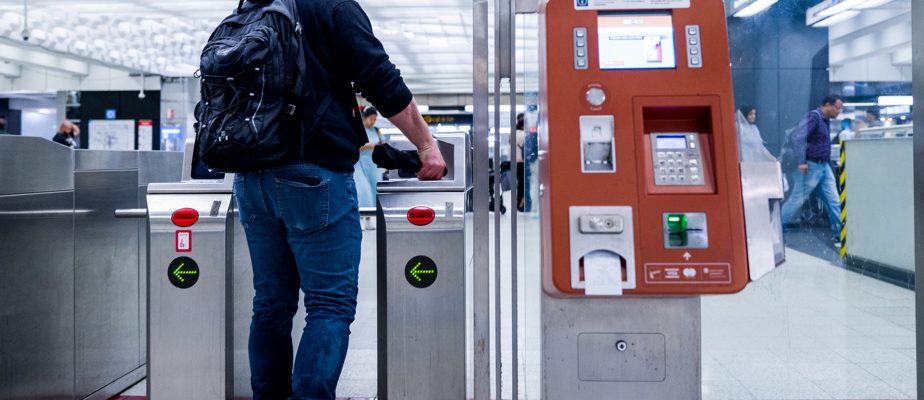After years of waiting, public transit users in Greater Montreal will finally be able to recharge their OPUS card with a mobile phone by the end of April. And several other cities in the province should board the train piloted by the Regional Metropolitan Transport Authority (ARTM).
“We can’t wait for all users to have access to it. It’s going to be a big change and it’s going to remove a lot of barriers, especially for people who live further away, for whom it will be very useful in order to be able to take their bus more easily,” says ARTM project manager Youness Touzani. in interview.
It is his team which has been carrying out tests on the future OPUS mobile charging system for several weeks now, which will work via the application Chrono.
The principle is simple: the user brings their OPUS card to their phone and can consult its contents using an application. This also allows him to purchase titles and add them to his card. That said, it will still not be possible to present your phone at the turnstiles: for the moment you will have to continue to use your good old blue and orange physical card.
Aside from the simulations carried out with Authority employees, three phases of testing have taken place since February, for a total of around 11,000 users. Preliminary results show that 93% “had no problem using” the app Chrono.
The Press also tried it and managed to buy securities easily.
As of March 6, nearly 6,600 transactions had been concluded with Chronoa rate of 94%, half carried out on Android and the other half on Apple iOS.
The last phase of testing is due to end on March 24, after which the final validations will be made on the fixes to the problems observed – payment, connection and display bugs have been detected in particular. The ARTM nevertheless expects to offer mobile charging during the month of April.
According to current estimates, this new digital system “should generate between 5 and 6 million transactions per year, with peaks at the beginning of the month,” says Mr. Touzani. The application has also been “designed to hold up well during these hot periods of use”, he assures.
Towards “OPUS 2.0”
The arrival of mobile charging is part of the vast digital transformation underway at the ARTM. By 2027, a “multi-mode” system will be deployed, possibly using the same mobile application, bringing together the metro, the bus, the REM, car sharing, bike sharing, taxi, carpooling or even the electric scooter.
End of August, The Press revealed that this transformation, called the “Concerto” project, would cost 144 million, with a budget for contingencies of 18.5 million, for a total of 162 million. The ARTM estimates that these investments would yield 364 million in benefits by 2035.
“With OPUS charging, we have pushed the limits of the capacity of the current system. There, we arrive at the maximum of what the system can take in terms of new functionalities”, however, nuance the Director of Public Affairs of the Authority, Simon Charbonneau.
He recalls that a call for tenders is still underway to “change the entire architecture of OPUS”. “We are really moving towards a 2.0 model, moving from a card-based system to a decentralized data bank where we have all the user information. This would allow us to emulate ticket validation models with the telephone, for example,” notes Mr. Charbonneau.
According to the ARTM, ridership could increase due to the combination of numerous modes of transport, with a total of 155 million trips within 12 years, in addition to $364 million in financial benefits over the same interval.
Quebec, Lévis and Joliette by June
Three cities, Quebec, Lévis and Joliette, will receive the “white label” ARTM software solution by next June. In other words, transport companies in these cities will be able to use mobile charging technology, but by developing their own mobile application, Chrono being reserved for Greater Montreal.
Other municipalities could also make known their desire to obtain said technology in the coming months, says Mr. Charbonneau, who does not hide that “discussions are already underway” on this subject.
The arrival of mobile recharge will also mean the end of the “OPUS online” service, which works using a card reader connected to a computer. “It is at the end of its life, it will be decommissioned by June,” says Mr. Touzani on this subject, who emphasizes that a transition will be ensured with frequent users.
In addition to ARTM member companies in Greater Montreal, several other major carriers such as the Capital Transport Network (RTC) have been using “OPUS en ligne” for several years.
